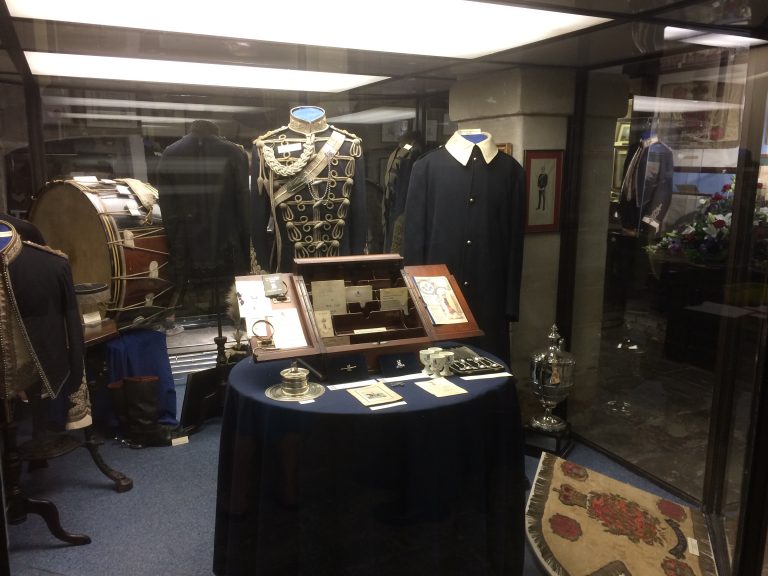
Warwickshire Yeomanry Museum
The Museum covers the history of the Warwickshire Yeomanry from 1794 to 1956 with a collection of uniforms, weapons, medals and memorabilia.
The Court House
Jury Street
Warwick
CV34 4EW
Tel: +44 (0)1926 492212
Website: www.warwickshire-yeomanry-museum.co.uk
About
The Museum is managed entirely by volunteers through a Charitable Trust; thus safeguarding the heritage and collective memory of those who have served with the Warwickshire Yeomanry so that both present and future generations may learn the importance of the past through its history. The Museum covers the history of the Warwickshire Yeomanry from 1794 to 1956 with a collection of uniforms, weapons, medals and memorabilia.
The Warwickshire Yeomanry together with the Worcestershire Yeomanry (Queen’s Own Worcestershire Hussars) took part in the Affair of Huj on 8th November 1917 – the last classic unsupported Cavalry Charge of the Great War in Palestine immortalised by Lady Butler’s painting which is on display in the Museum. One of the 75mm Krupps Guns captured that day is also on display.
The Regiment fought with distinction in both World Wars.
History
The following is a brief history of the Regiment:
On the 25th June 1794 the Lord Lieutenant of Warwickshire, the Earl of Warwick had raised by public subscription sufficient money to raise a force of Volunteer Cavalry for the defence of the County in the event of invasion by the French, with whom we were at war. This force comprising Gentlemen and Yeomanry of the County was named the Warwickshire Yeomanry Cavalry and its first commanding officer was the 4th Earl of Aylesford.
The Regiment has had unbroken service since that date and has always comprised men of Warwickshire who have followed normal civilian occupations in peacetime, but have voluntarily trained for war at drill nights, weekends and annual camps. When an internal threat of war has occurred, the Regiment has mobilised to full time service with the forces of the Crown. Over 2000 members of Warwickshire families have served in the Regiment over the past 200 years.
During the 19th Century the Regiment was frequently called out to help maintain law and order in Birmingham, Coventry and Bedworth – particularly during the Chartist Riots from 1837-1840. A volunteer Squadron of the Regiment served with great distinction in the Boer War for a year and a half. The Regiment was mobilised in the Great War and the Second World War and served with great gallantry throughout them both. In the Great War at Gallipoli and at the battles of Katia, Romani, Rafa, El Arish and Huj in Palestine, the latter the scene of the Regiment’s famous cavalry charge. In the Second World War the Regiment served in Iraq, Syria and Persia and then with the 8th Army at the Battle of El Alamein where only seven tanks of the Regiment survived, and later the Regiment fought throughout the Italian campaign.
In 1956 the Warwickshire Yeomanry amalgamated with the Worcestershire Yeomanry to form The Queen’s Own Warwickshire and Worcestershire Yeomanry. In 1969 the Regiment was reduced by defence cuts to a Cadre and a Signals Squadron.
The Warwickshire Yeomanry Museum re-opened on 9 August 2014 following extensive refurbishment to coincide with the commencement of the 100th Anniversary of WW1. The Regiment mobilised on 5 August 1914 and all four Squadrons camped in Warwick on 10 August entraining for Bury-St-Edmunds on the 13 August. The rest is history.
Admission
Admission is free – Donations welcomed. Private viewings by appointment – see website.
The museum has a lift for easy access.
Opening Times
Please note the museum is currently closed and will reopen on Good Friday 18th April, 2025.
